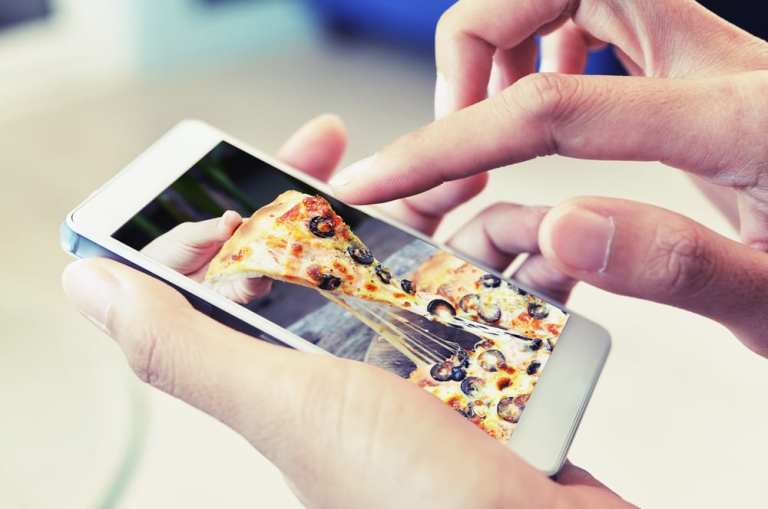
Mobile food ordering moved from niche to mainstream in just a few years. According to the new Mobile Order-Ahead Tracker, the volume of food and beverage orders placed via mobile apps grew by 130 percent between 2016 and 2018. Currently, 60 percent of U.S. consumers order delivery or takeout once a week.
Due to this rapid growth, it is forecast that the mobile order-ahead market will reach $38 billion by next year.
Consequently, the mobile ordering landscape has become more crowded. Delivery providers like Uber Eats and Postmates, payment platforms like Square and multiple upstart third parties are all competing for customers.
Restaurants have been taking two approaches: Larger, resource-rich chains are developing their own apps to capture revenue, while smaller, regional restaurants with tighter budgets are partnering with third-party platforms.
Roughly half (49 percent) of large, quick-service restaurants (QSRs) offer in-app payments, which makes sense for a McDonald’s or Taco Bell, since mobile purchases now account for up to 20 percent of all QSR revenue. But that also means the lack of an app can put a local or independent restaurant at a competitive disadvantage. PYMNTS spoke to Ray Reddy, co-founder of Ritual, a mobile ordering app for smaller restaurants, about how smaller restaurants can compete in the mobile ordering game.
The app features a “piggyback system” that allows users to broadcast orders to co-workers or friends, and they can also add items to the initial order. Ritual also allows smaller restaurants to offer a rewards program, which can be an issue since independent restaurants might not have enough locations or order frequency to make it worth customers’ participation.
Ritual combines multiple restaurants on the app, and users can earn and redeem points at any eatery in the network. Users also earn extra points for repeat visits within a time frame that is dynamically generated by the app. “It’s a clever algorithm that looks at how often you’d normally come back, and gives you a shorter timeframe to come back and make a second purchase within that window,” Reddy said. As a result, restaurants participating in the program are seeing their average visit frequency increase by up to 25 percent.
Apps can also provide a restaurant with customer data beyond just sales. Digital ordering provides a peek into who patronizes the restaurants and how often, as well as what they are ordering. It is information that can be used to compile an accurate list of key performance indicators (KPIs).
The app also aggregates and shares this data among participating restaurants as a form of competitive intelligence. “If you’re a sushi spot, [Ritual shows you] what other sushi spots look like with these KPIs in your neighborhood,” Reddy noted.
Many startups, like the Canadian Moduurn, are creating mobile ordering apps for the small and medium-sized business (SMB) niche. Moduurn is used by Victoria-based Red Barn Market, a QSR with seven locations. They found that 45 percent of customers would use online ordering services more often if loyalty programs were available, and that 33 percent were willing to pay an extra fee for delivery.
While ordering pickup is tried and true, delivery is the logical endpoint for mobile ordering – and it can also boost sales. Sixty percent of restaurants using Moduurn reported increased sales after offering home delivery.
Not all restaurants are equipped to offer delivery, though.
Mobile order-ahead developer ItsaCheckmate and ordering app Allset have partnered to enable restaurants to provide digital ordering. The collaboration will facilitate third-party payment options. For the delivery component, ItsaCheckmate integrates multiple online ordering sources such as Uber Eats, Caviar, DoorDash and Ritual.
Payment platforms have also been tapping into the mobile order-ahead market. Earlier this month, Square announced the launch of new order management integrations for Square for Restaurants, which will allow orders from DoorDash, Postmates and Caviar to automatically integrate into a restaurant’s point of sale (POS) to streamline operations.
According to the Mobile Order-Ahead Tracker, 62 percent of restaurants feel unprepared for a mobile future. The pressure is on, though, based on a study from consulting firm BRP. The report found that smartphones are involved in nearly four out of every 10 meals, meaning consumers are using them for everything from looking up menus before dining to placing mobile orders and leaving online reviews. More than one-third (38 percent) of all restaurant visits are enhanced by mobile devices, while for millennials, mobile devices were used by the majority (53 percent) of respondents. One in five mobile users pre-order before going to a restaurant, and this figure jumps to 32 percent for millennials.
There was also a disconnect between expectations and execution, echoing the considerable number of unprepared restaurants in the Mobile Order-Ahead Tracker. Over one-quarter (26 percent) of Gen Z and millennials said mobile order-ahead options were extremely important, but only 41 percent of restaurants said they were executing mobile order-ahead in an excellent manner.